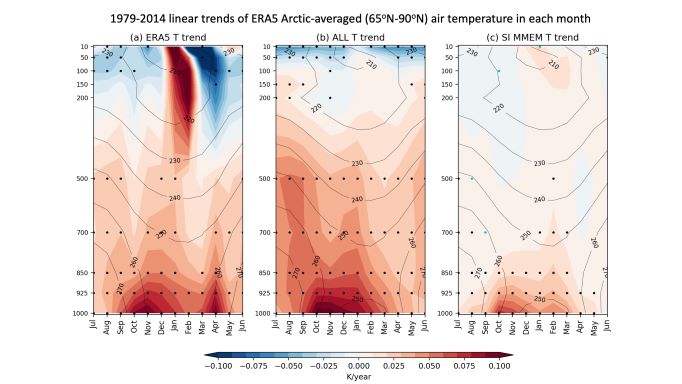Liang, Y.-C., C. Frankignoul, Y.-O. Kwon, G. Gastineau, E. Manzini, G. Danabasoglu, L. Suo, S. Yeager, Y. Gao, J.J. Attema, A. Cherchi, R. Ghosh, D. Matei, J.V. Mecking, T. Tian, and Y. Zhang, 2021. Are the Impacts of the Observed Arctic Sea-ice Variability on the Cold Season Atmospheric Circulation Underestimated in AGCM Experiments? Journal of Climate, 34, 8419-8443. https://doi.org/10.1175/JCLI-D-20-0578.1
To examine the atmospheric responses to Arctic sea-ice variability, this study uses a coordinated set of large-ensemble experiments of nine atmospheric general circulation models (AGCMs) forced with observed daily-varying sea-ice, sea-surface temperature, and radiative forcings prescribed during the 1979-2014 period, together with a parallel set of experiments where Arctic sea ice is substituted by its climatology. The simulations of the former set reproduce the temperature trends in reanalysis data (left panel), with similar amplitude, and their multi-model ensemble mean (MMEM, middle panel). The MMEM difference between the two experiments (right panel) allows isolating the effects of Arctic sea-ice loss, which explain a large portion of the Arctic warming trends in the lower troposphere and drives a small but statistically significant weakening of the wintertime Arctic Oscillation. Overall, this study suggests that the sea-ice impacts on trends and interannual atmospheric variability simulated by AGCMs could be underestimated, but caution is needed because internal atmospheric variability may have affected the observed relationship. Figure provided by Young-Oh Kwon.

